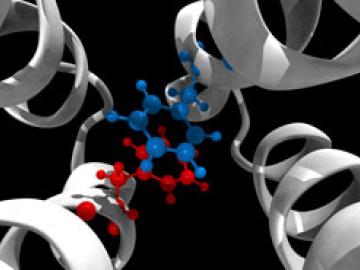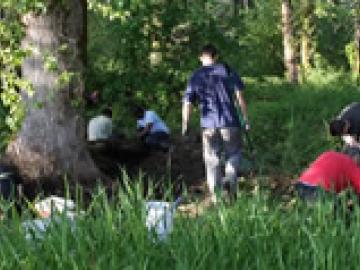Filter News
Area of Research
- (-) Biology and Environment (42)
- (-) Computational Biology (4)
- Advanced Manufacturing (14)
- Biological Systems (15)
- Biology and Soft Matter (1)
- Building Technologies (3)
- Chemistry and Physics at Interfaces (4)
- Clean Energy (187)
- Climate and Environmental Systems (2)
- Computational Engineering (2)
- Computer Science (6)
- Electricity and Smart Grid (1)
- Energy Frontier Research Centers (7)
- Energy Sciences (3)
- Fossil Energy (2)
- Fuel Cycle Science and Technology (1)
- Functional Materials for Energy (8)
- Fusion and Fission (19)
- Fusion Energy (2)
- Geographic Information Science and Technology (2)
- Isotope Development and Production (1)
- Isotopes (10)
- Materials (226)
- Materials Characterization (2)
- Materials for Computing (13)
- Materials Synthesis from Atoms to Systems (5)
- Materials Under Extremes (5)
- National Security (25)
- Neutron Science (80)
- Nuclear Science and Technology (27)
- Nuclear Systems Modeling, Simulation and Validation (1)
- Nuclear Systems Technology (1)
- Quantum Condensed Matter (1)
- Quantum information Science (2)
- Reactor Technology (1)
- Sensors and Controls (1)
- Supercomputing (115)
- Transportation Systems (5)
News Type
News Topics
- 3-D Printing/Advanced Manufacturing (7)
- Advanced Reactors (1)
- Artificial Intelligence (3)
- Big Data (1)
- Bioenergy (9)
- Biology (18)
- Biomedical (5)
- Biotechnology (5)
- Buildings (2)
- Chemical Sciences (8)
- Climate Change (7)
- Composites (3)
- Computer Science (5)
- Coronavirus (7)
- Critical Materials (1)
- Cybersecurity (1)
- Decarbonization (2)
- Energy Storage (5)
- Environment (15)
- Fusion (1)
- Grid (1)
- High-Performance Computing (5)
- Isotopes (2)
- Machine Learning (2)
- Materials (10)
- Materials Science (4)
- Microscopy (3)
- Molten Salt (1)
- Nanotechnology (5)
- National Security (1)
- Net Zero (1)
- Neutron Science (3)
- Nuclear Energy (1)
- Partnerships (5)
- Physics (1)
- Polymers (1)
- Security (1)
- Simulation (4)
- Summit (3)
- Sustainable Energy (4)
- Transformational Challenge Reactor (1)
- Transportation (2)
Media Contacts
A team of scientists led by Oak Ridge National Laboratory have discovered the specific gene that controls an important symbiotic relationship between plants and soil fungi, and successfully facilitated the symbiosis in a plant that

Scientists at the Department of Energy’s Oak Ridge National Laboratory have created a recipe for a renewable 3D printing feedstock that could spur a profitable new use for an intractable biorefinery byproduct: lignin.

In an effort to reduce errors in the analyses of diagnostic images by health professionals, a team of researchers from the Department of Energy’s Oak Ridge National Laboratory has improved understanding of the cognitive processes

Dr. Michael Simpson, Oak Ridge National Laboratory Corporate Fellow and Group Leader of the Nanofabrication Research Laboratory Group in the Center for Nanophase Materials Sciences (CNMS) at ORNL, has been appointed the next director of the UT-ORNL Joint Institute for Biological Sciences (JIBS). This appointment is in addition to his role at CNMS.

If scientists can control cellular functions such as movement and development, they can cripple cells and pathogens that are causing disease in the body.

The ability to make plants grow stronger and more quickly is a key goal in the effort to develop better biofuels and better understand plant efficiency.




